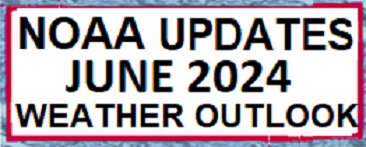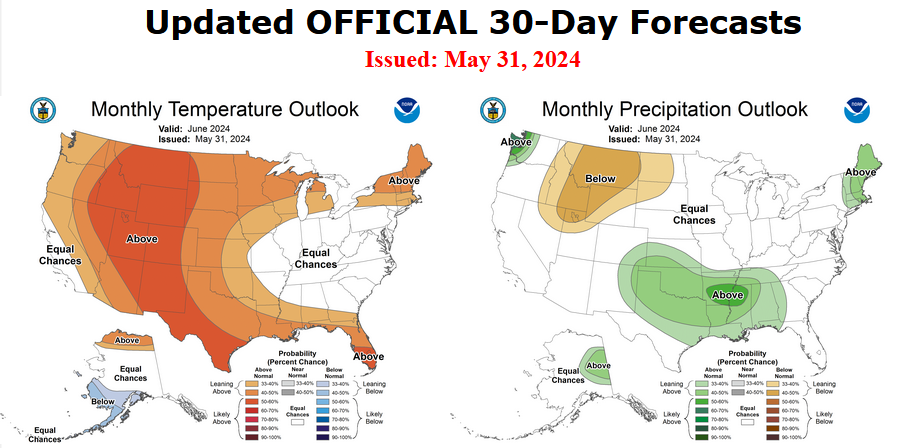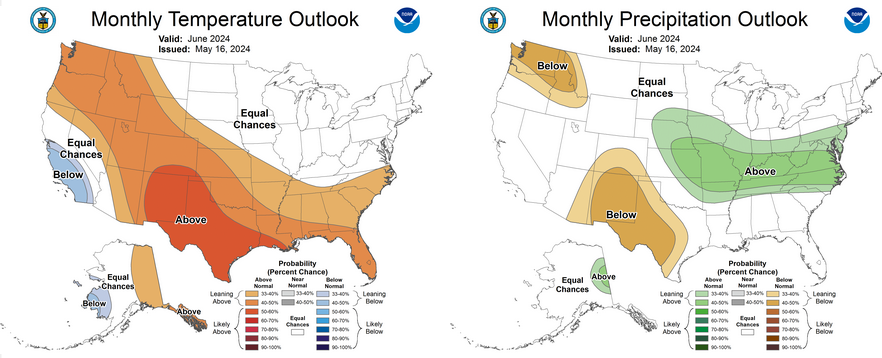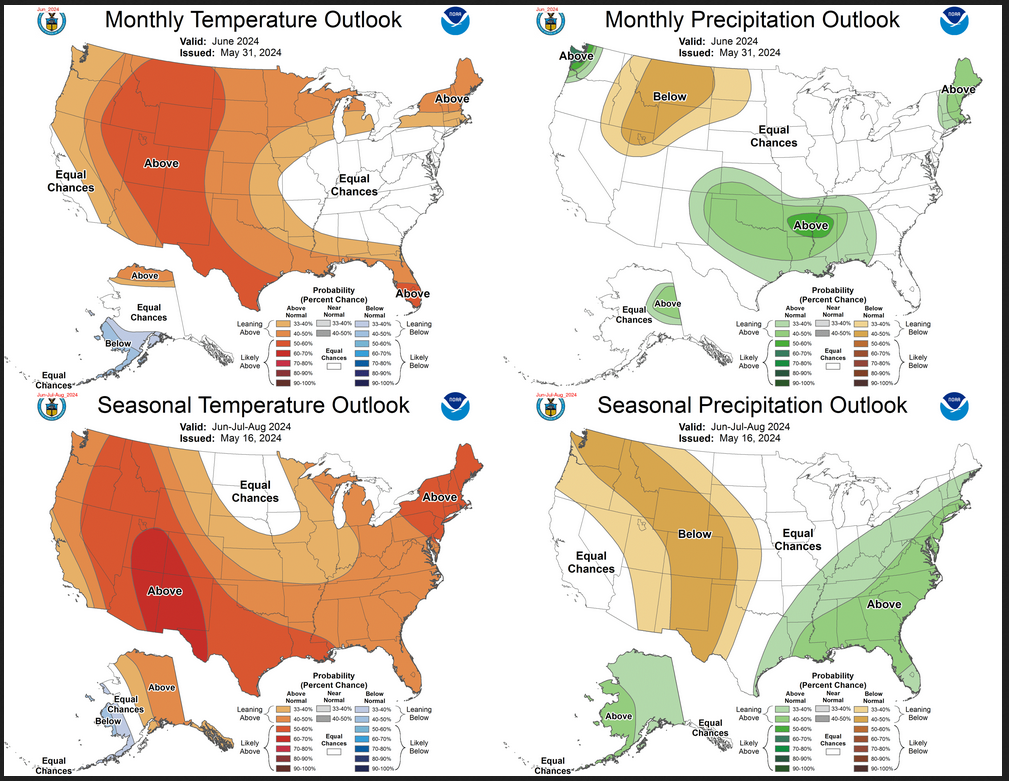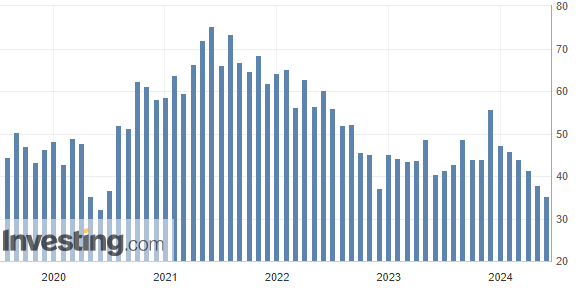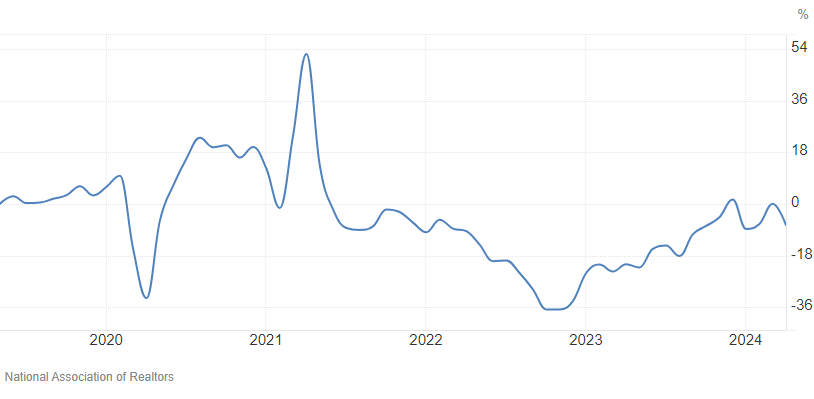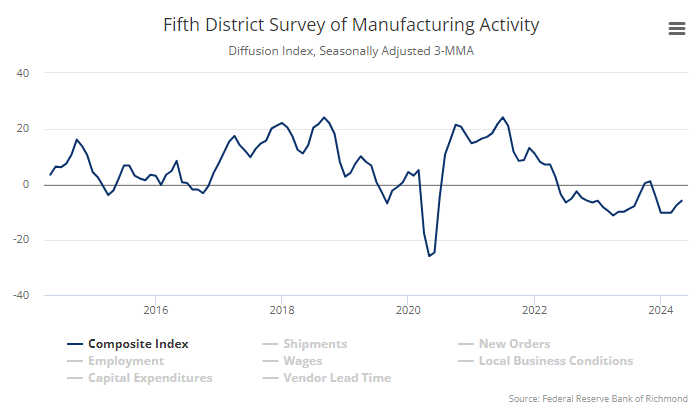Today Through the Fourth Friday (22 to 28 days) Weather Outlook for the U.S. and a Six-Day Forecast for the World: posted June 3, 2024
This article focuses on what we are paying attention to in the next 48 to 72 hours. The article also includes weather maps for longer-term U.S. outlooks and a six-day World weather outlook which can be very useful for travelers.
First the NWS Short Range Forecast. The afternoon NWS text update can be found here after about 4 p.m. New York time but it is unlikely to have changed very much from the morning update. The images in this article automatically update.
Short Range Forecast Discussion
NWS Weather Prediction Center College Park MD
Mon Jun 03 2024
Valid 12Z Mon Jun 03 2024 – 12Z Wed Jun 05 2024…Excessive Rainfall and Severe Weather threaten portions of the
Mississippi Valley and Southern Plains today……Increasing Excessive Heat Risk potential over parts of the West and
southern Texas through mid-week…Shortwave energy spinning through the Northwest will support showers and
thunderstorm activity across the region today. Rainfall rates over the
favored terrain of the Cascades and Northern Rockies will be high enough
to warrant an Excessive Rainfall threat. Thus, a Slight Risk (at least
15%) of Excessive Rainfall leading to Flash Flooding is in effect for
portions of the Northern Rockies, while a Marginal Risk (at least 5%) area
is in place over the Cascades, Olympics and Seattle Metro area. Elsewhere,
showers and thunderstorms are expected to continue over parts of the Great
Plains and Mississippi Valley today. Pockets of severe thunderstorms
capable of producing heavy to excessive rainfall may develop over parts of
the Southern Plains into the Mississippi Valley. Slight Risks of Excessive
Rainfall and Severe Thunderstorms are in effect over those areas, where a
swath of damaging wind gusts are possible. The severe thunderstorm threat
concentrates over parts of the Central Plains and Middle Mississippi
Valley on Tuesday, where a Slight Risk is in effect. Large hail is
possible at the outset when storms are more cellular, but will then be
followed by a congealing of cells into a line of storms with damaging wind
gusts eventually being the main threat.An upper ridge is expected to develop over the West early to mid-week.
High temperatures will gradually climb into 100s by Wednesday and Thursday
with many records potentially being tied or broken on those days.
Excessive Heat Warnings are in effect for the central valley region of
California while Excessive Heat Watches are in effect for parts of the
Desert Southwest. Extreme HeatRisk is probable to continue for much of
southern Texas through Wednesday. This level of heat risk means that there
will likely be little to no overnight relief for those without effective
cooling and/or adequate hydration.



